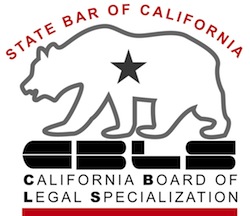How much cash can you keep when you file bankruptcy?
It’s not as though you won’t have living expenses after you file bankruptcy.
You need to know how you’ll manage and what you’ll have to manage with.
Funding that fresh start is what exemptions are all about.
We are talking here about California because exemptions, the laws that govern what you can keep for your fresh start., are unique to each state.
Exemptions are the one part of bankruptcy that is explicitly different from state to state. So, recognize that the rules we’re talking about here apply in California.
California exemption systems
California has two distinct exemption schemes that you can choose from. And you have to choose one scheme or the other.
You can’t take one exemption from one set and another exemption from the other set.
The exemptions originally enacted in California were big on protecting homes, so we have generous homestead exemption (which got bigger January 1, 2023) under generally applicable state law. That system is found in California Code of Civil Procedure 704 and the statutes that follow it.
All about the California homestead
California also has a second system of exemptions available only for its residents who file bankruptcy. These are found in CCP 703.140.
We’re going to look closely at the California bankruptcy exemptions (CCP 703.140) on the question of how much cash you can protect. Here’s an online summary of these exemptions.
Cash to start over
The big money for exemptions is found in the grubstake provision: §703.140(b)(5).
If you haven’t elected to protect equity in real property, you can combine the dollar amount of the homestead in subsection (1) with the “wild card” amount in subsection (5) for total of $33,365.
That’s a pretty good nest egg.
Money traceable to exempt source
You may be holding money that comes from an exempt source. If the money you hold is traceable to its source, it may be exempt in addition to money claimed exempt as a grubstake.
Personal injury Funds that you can trace to a personal injury recovery can be claimed exempt. CCP 703.140(b)(11)(D) limits the exempt portion to damages for bodily injury (not property damage).
The money needs to be traceable to its source. And it has to be still in the form of money. If you spend the exempt money on a car, the car isn’t exempt as the proceeds of a personal injury recovery.
This exemption currently protects up to $31,950.
Insurance proceeds or wrongful death award If someone on whom you were dependent dies or was killed, any award you receive as a result is exempt to the extent necessary for your support.
It gets a little messier, since a judge may have to decide what’s “necessary” for your support. But for an elderly or disabled individual, that amount could be considerable.
Public benefits Social Security, unemployment, workers compensation, and veterans benefits are protected from creditors. Though the words of the statute protect your “right to receive” these benefits, case law in the 9th Circuit protects any sums paid out that are traceable to the exempt source.
Retirement or profit sharing payments Payments on account of old age, length of service or disability under a contract are exempt, again, to the extent necessary for your support. The precise amount you can protect is unstated but the protection is whatever is “necessary” for support.
IRA’s
The only good thing to come out of bankruptcy “reform” in 2005, in my opinion, was a universal bankruptcy exemption for IRA’s. The cap started at 1 million dollars, and is adjusted every three years.
If you are lucky or hard working enough to have a substantial IRA, neither your creditors nor a bankruptcy trustee can reach it by reason of 11 USC 522(n).
Trusts
Trusts that have a specific provision that makes them non transferable are not even property of the bankruptcy estate. The provision is sometimes called an anti-alienation provision or a spendthrift provision.
It’s this kind of provision that takes most pension plans and 401(k) arrangements out of the reach of creditors.
A trust you create for your own benefit or a revocable living trust doesn’t fall within this provision. But a spendthrift trust created by a parent or grandparent with you as the beneficiary might qualify.
When something isn’t “property of the estate”, an exemption isn’t necessary to protect it in bankruptcy.
Once you move beyond the grubstake, or wild card exemption we looked at first, application of the exemption laws gets a little more complex. If one of these other exemptions for cash might apply to you, get help from an experienced bankruptcy attorney.
The single biggest mistake that people representing themselves in a bankruptcy case make involves botching claims of exemption.
More
New California exemption for cash
Interviewing a bankruptcy lawyer
Image courtesy of Flickr and Bookis






